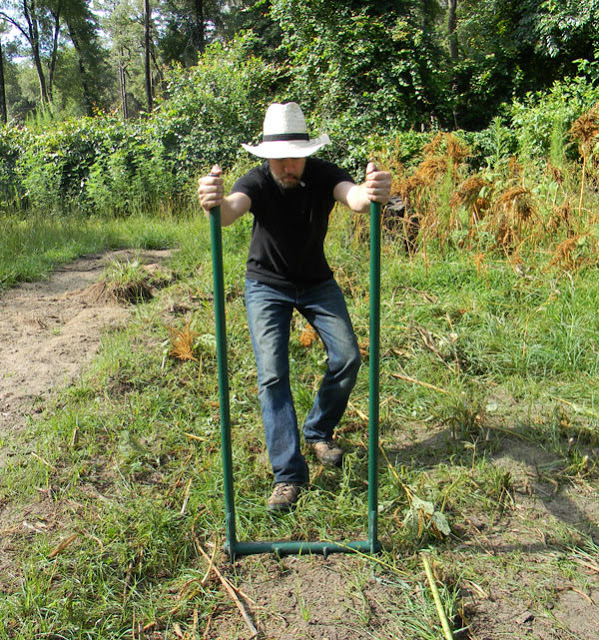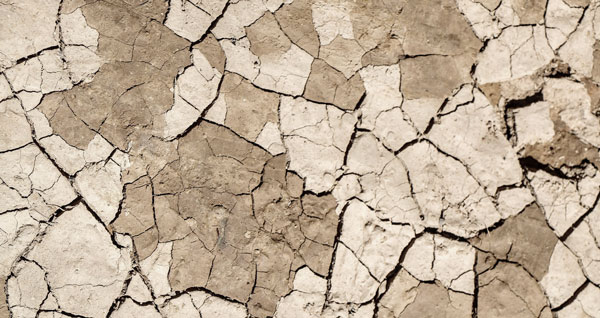In last night’s Goodstream, I share some ideas:
Notes from the stream:
Clay soil can drown and kill plants.
Clay soil can become airless.
Clay soil is very hard to work – work it at the wrong time and you’ll wreck the structure.
Dr. Leonard Perry, Extension Professor, University of Vermont writes:
“If your soil dries like a brick with cracks when it’s dry, or in clods, and is like putty when wet sticking to shoes and tools, you have clay soil. It is hard for most roots to penetrate such soil. Take some soil, add a little water, and form a ball in your hand. Then squeeze the ball into a flat ribbon. If the ribbon reaches two inches long or more before breaking, this is a sign you have clay soil.”
Raised beds! People think I hate raised beds. I generally do for sand, hot Florida conditions, etc. But for clay and bad drainage? Good!
Extra calcium can help the soil clump instead of stay a sticky mass. If your clay soil is acid, you can add lime. If not, try adding some gypsum.
Dig and don’t compact it again.
Broadforks help a lot. Double-digging with a fork and spade is murder.
I like the Meadow Creature:

Add lots of organic matter when digging. Organic matter sticks around a lot better in clay than it does in sand.
Maybe add some biochar?
Dr. Rebecca T. Barnes’ study on biochar in clay and sand:
“The addition of charcoal (or biochar) to soil has significant carbon sequestration and agronomic potential, making it important to determine how this potentially large anthropogenic carbon influx will alter ecosystem functions. We used column experiments to quantify how hydrologic and nutrient-retention characteristics of three soil materials differed with biochar amendment. We compared three homogeneous soil materials (sand, organic-rich topsoil, and clay-rich Hapludert) to provide a basic understanding of biochar-soil-water interactions. On average, biochar amendment decreased saturated hydraulic conductivity (K) by 92% in sand and 67% in organic soil, but increased K by 328% in clay-rich soil.”
Basically, all of that means that biochar in clay helped with drainage, and in sand, it helped retain more water.
You can also dig in rotten sawdust or rotten mulch, or just dump a lot of stuff to make a forest floor environment.
As Barbra Pleasant writes at GrowVeg.com:
“Promoting ventilation is a constant goal when growing vegetables in clay soil, which is easily accomplished by mixing coarse forms of organic matter into the soil between plantings. Chunky types of organic matter like garden compost, weathered sawdust, or chopped leaves will enhance the structure of clay better and longer than very fine materials like ground peat moss or screened compost. When mixed into tight clay, large particles of organic matter become life rafts for microorganisms, which are major players in the transformation from compacted clay to fertile clay loam.
After organic matter has been added to clay soil for more than three seasons, you will see dramatic changes in the soil’s texture, or tilth. It will dry faster after heavy rains, crack a little less in dry weather, and won’t require as much digging to keep it aerated.”
Adding beach sand may work. Story about Steve Solomon’s gardening friend.
Hugelkultur.
Sheet mulching is marvelous, in case you missed that!
Melon pits for corn, melons, squash, sunflowers.


1 comment
Now that I’m digging beds after the growing season comes to an end, I find myself without any organic material to add to the new clay soil beds I’ve just double-dug. Some areas of the yard could use a mowing but this is the time of year when everything goes to seed and I don’t need anymore weed seeds in my new beds. So I’m hoping gypsum will help but I’m also hoping I don’t need a ton of it per bed as I dig grocery rows between fruit trees this Fall.
Comments are closed.